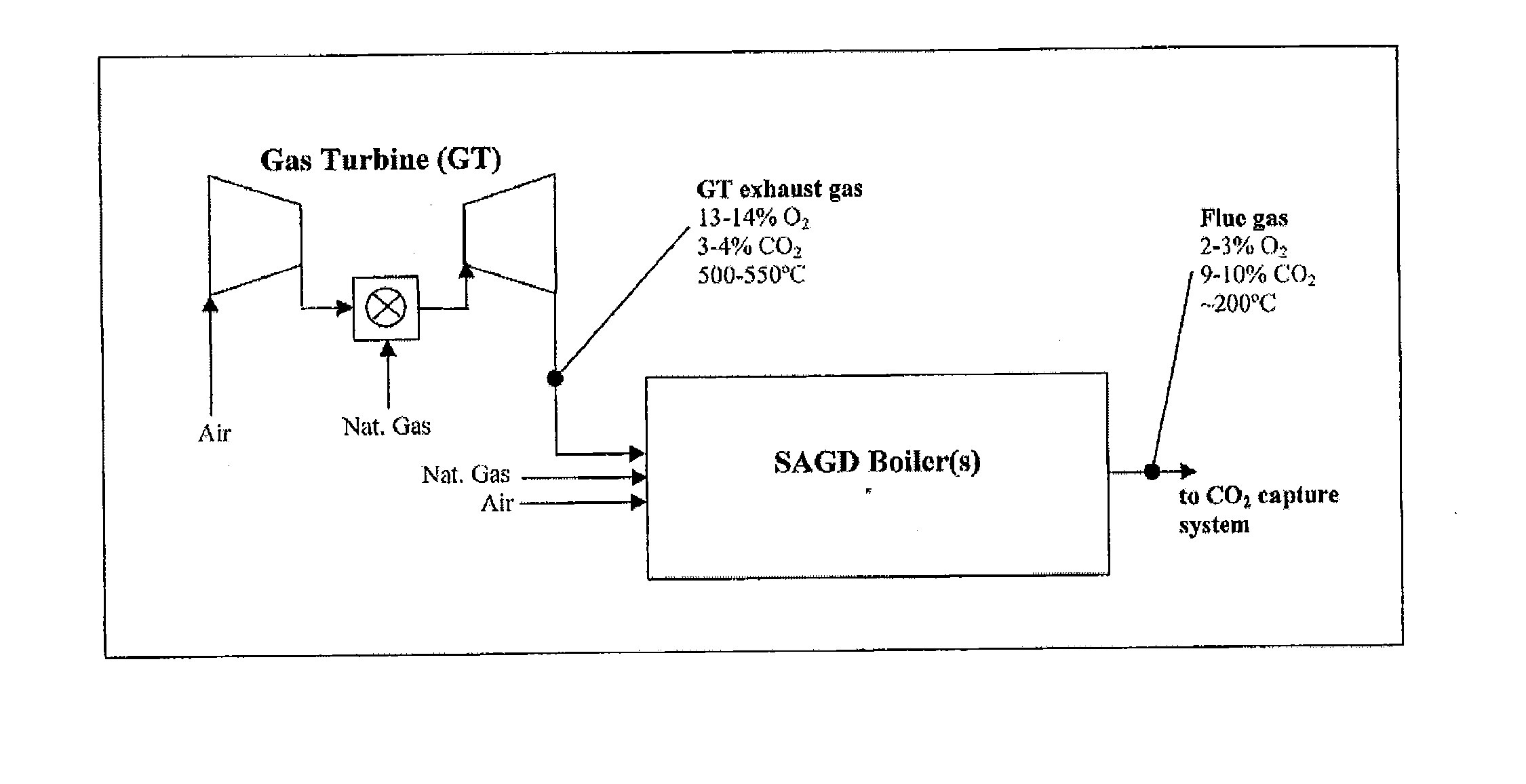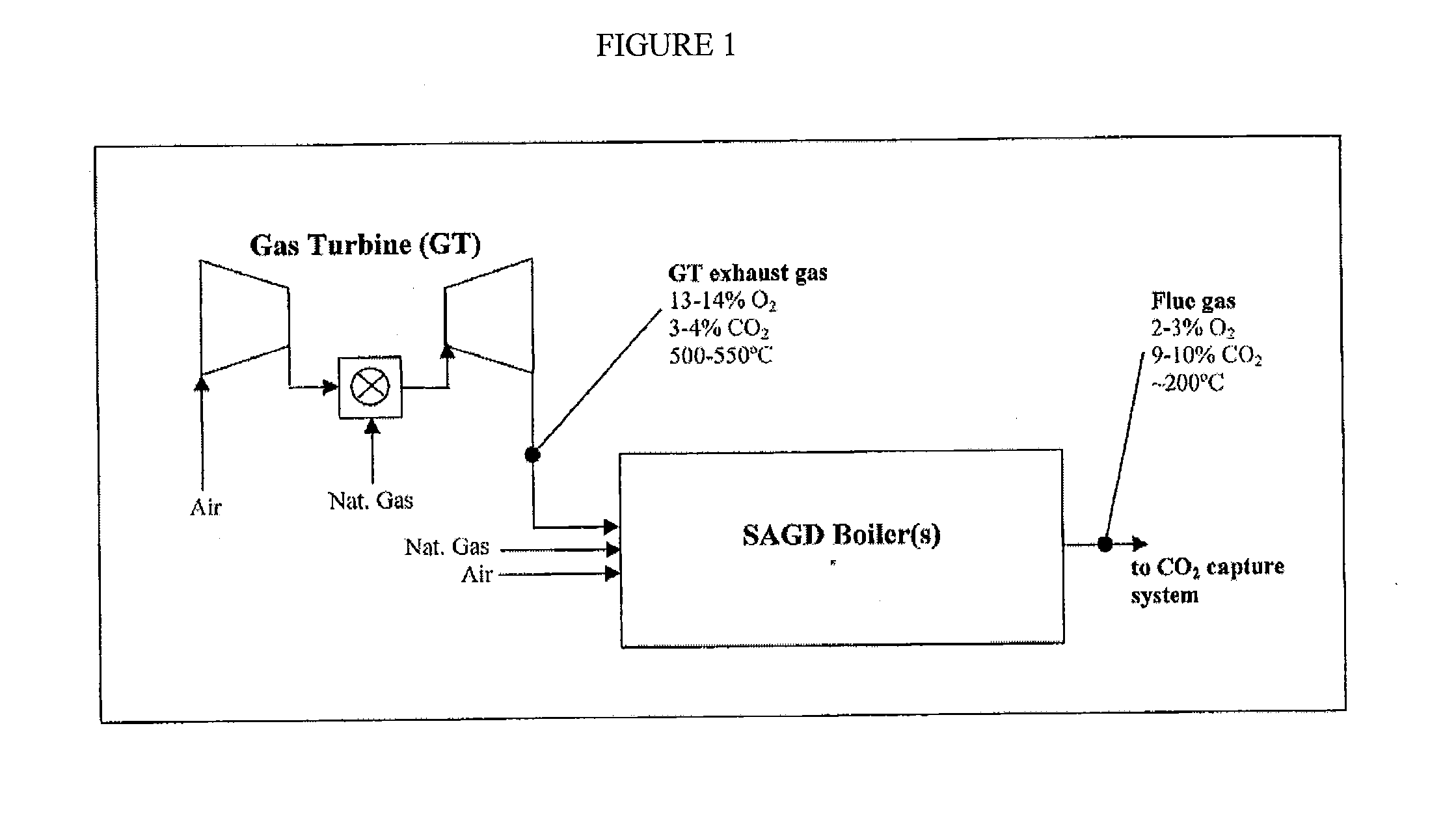Integrated gas turbine, sagd boiler and carbon capture
a gas turbine and integrated technology, applied in the direction of emission prevention, separation process, lighting and heating apparatus, etc., can solve the problems of increasing the specific co2 emission rate, increasing the co2 emission rate, and presenting operational and logistical challenges
- Summary
- Abstract
- Description
- Claims
- Application Information
AI Technical Summary
Benefits of technology
Problems solved by technology
Method used
Image
Examples
example 1
Integrated Gas Turbine-SAGD Boilers with and without Carbon Capture Systems
[0032]In this example, the invention is a process in which the flue gas from the integrated Gas Turbine-SAGD boiler system is delivered to a solvent-based carbon capture system that involves absorption of CO2 from the flue gas into the solvent, followed by thermal regeneration of the solvent to release CO2, which is further compressed. The solvent is thermally regenerated with heat from low-pressure steam generated in an auxiliary gas-fired boiler. The process modeling assumes that the MEA (monoethanolamine) solvent is used, and that a 90% CO2 capture rate from flue gas is achieved. The flue gas from the SAGD boilers as well as the flue gas from the amine regenerator boilers is delivered to the capture system. This process is shown in FIG. 2.
[0033]Table 1 shows process modeling results for four cases. Case 1 represents SAGD boilers without CO2 capture, using grid power. Case 2 represents the integrated GT-SAG...
PUM
| Property | Measurement | Unit |
|---|---|---|
| temperature | aaaaa | aaaaa |
| adsorption | aaaaa | aaaaa |
| concentration | aaaaa | aaaaa |
Abstract
Description
Claims
Application Information
 Login to View More
Login to View More - R&D
- Intellectual Property
- Life Sciences
- Materials
- Tech Scout
- Unparalleled Data Quality
- Higher Quality Content
- 60% Fewer Hallucinations
Browse by: Latest US Patents, China's latest patents, Technical Efficacy Thesaurus, Application Domain, Technology Topic, Popular Technical Reports.
© 2025 PatSnap. All rights reserved.Legal|Privacy policy|Modern Slavery Act Transparency Statement|Sitemap|About US| Contact US: help@patsnap.com


